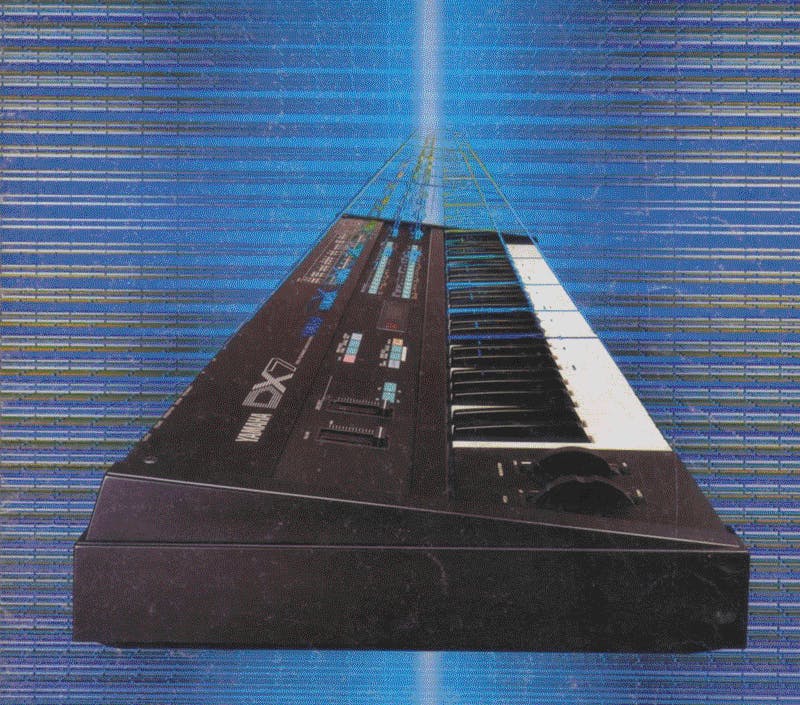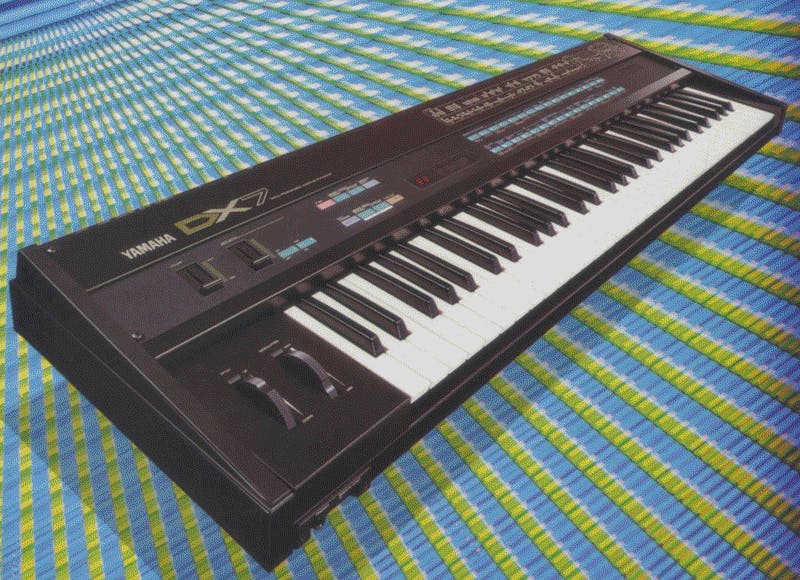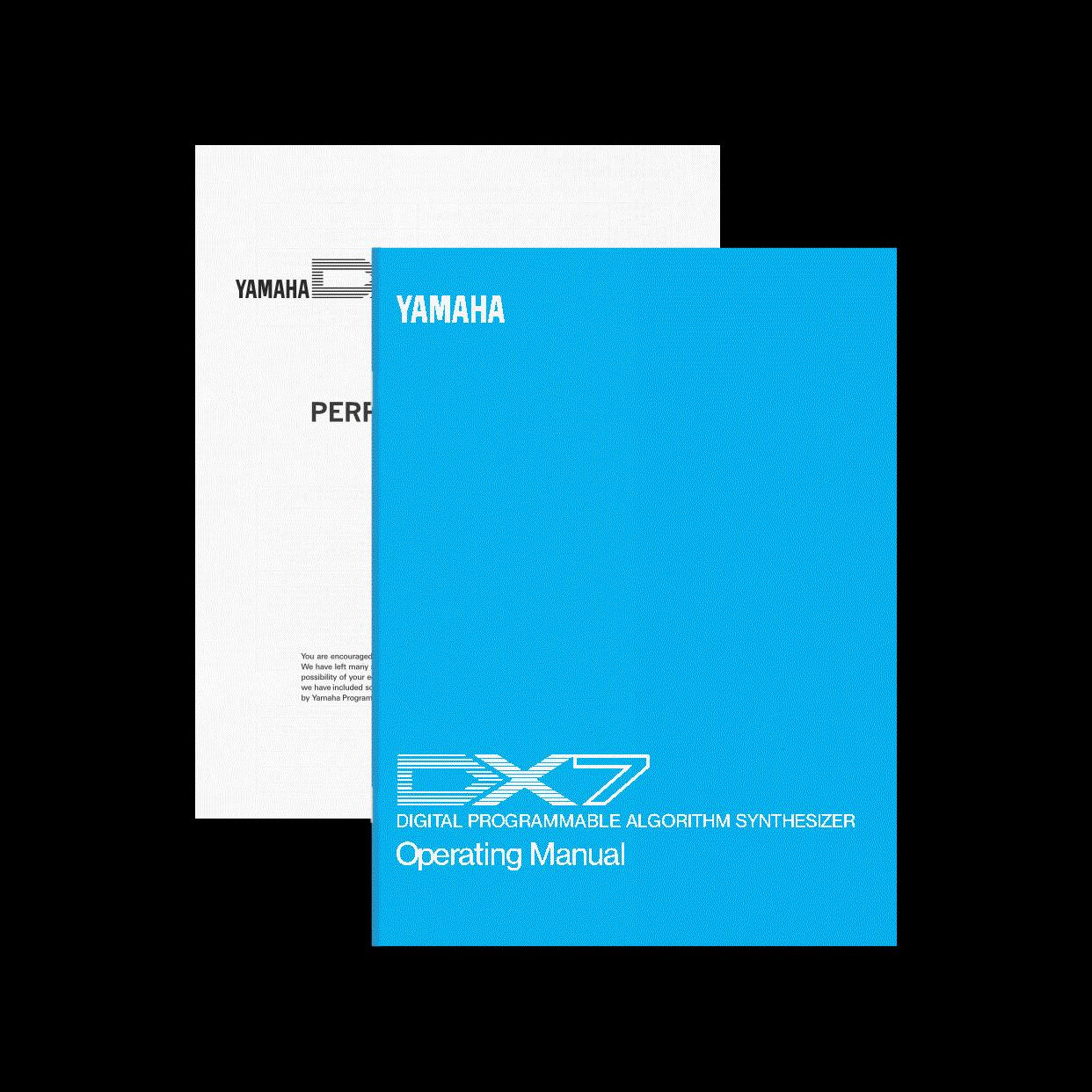1983 (May)
Initially sold for ¥230,000
The DX7 is without any doubt a milestone in synthesizer history. It achieved a great success over the years and has now a cult status among players and aficionados, but we must remember that in 1983 it wasn't a groundbreaking instrument, rather a mix of the latest technologies already available.
FM synthesis was in development since the late 70s at Yamaha, with the GS lineup already equipped with digital FM capabilities. It sounded great, but had to be programmed using an external computer, and was extremely heavy, bulky and expensive. Roland was already producing cheap polyphonic synthesizers for the public: for example the Juno 6 retailed for far less than 1000$ in 1982. Nothing particularly innovative with the interface either, as the 1981 Rhodes Chroma already adopted membrane switches and sliders, and many synthesizers already had command panels flush with the keyboard. Furthermore, the Chroma shows a very similar arrangement of the top panel, with data entry sliders on the left and two rows of preset / function switches on the right.
Eventually the convergence of all these single avant-garde instances successfully resulted in a synthesizer that received lots of praise for its sonic capabilities. Its engine however requires a different attitude to be programmed, something that since 1983 scared away lots of players used to the common oscillators+filter scheme but can be learned for sure.
The DX7 FM engine has 6 operators, 32 algorithms, pitch envelope generator and keyboard scaling. Modulation can be achieved through foot switches, breath controllers and keyboard aftertouch. Voices cannot be stacked and a basic MIDI implementation is provided, although many later expansion will add these features.
Additional patches storage relies on RAM cartridges type 1, and many presets carts were manufactured also by third parties as the engine could to so much more than the limited selection of factory presets. An optional Yamaha ADX10 accessory kit could be purchased, containing a volume pedal, a sustain pedal, two blank cassettes and a 1/4" cable.
Needless to say, the DX7 was a big hit.
Features
- Programmable 6-operator 32-algorithm digital FM tone generator.
- Independent 8-parameter envelope generator for each operator.
- 32-voice internal RAM memory.
- Cartridge slot for ROM cartridges containing 64 voices or user-programmable 32-voice RAM cartridges.
- Programmable function memory for real-time performance effects.
- 61-key velocity and after-touch sensitive keyboard.
- 16-note polyphonic output.
- Sustain footswitch, portamento footswitch, volume and modulaion foot controllers, and breath controller inputs.
- MIDI IN, OUT and THRU terminals.
Note: the most famous of the "black boxes" isn't actually black. Yamaha confirms that the DX7 was given a dark chocolate colour to match the scheme of the YIS home computers.






